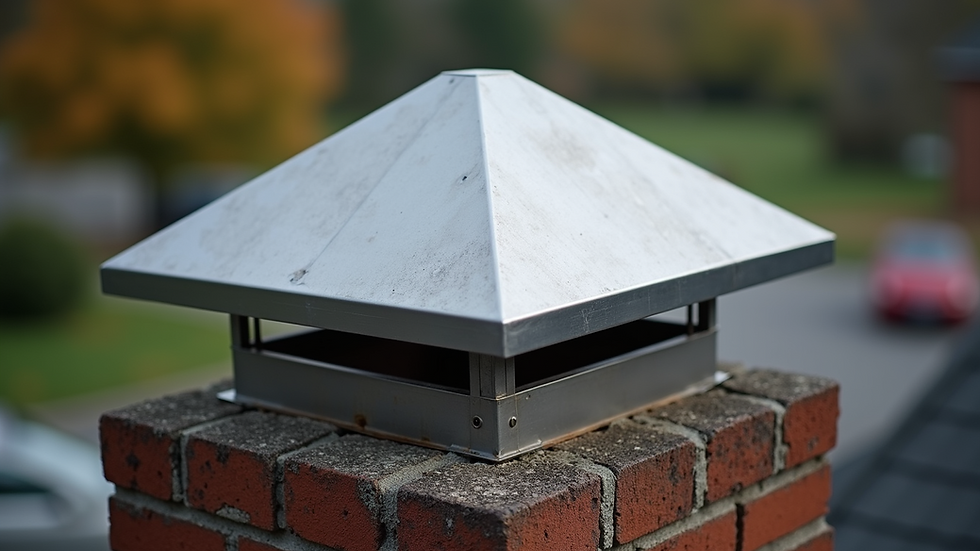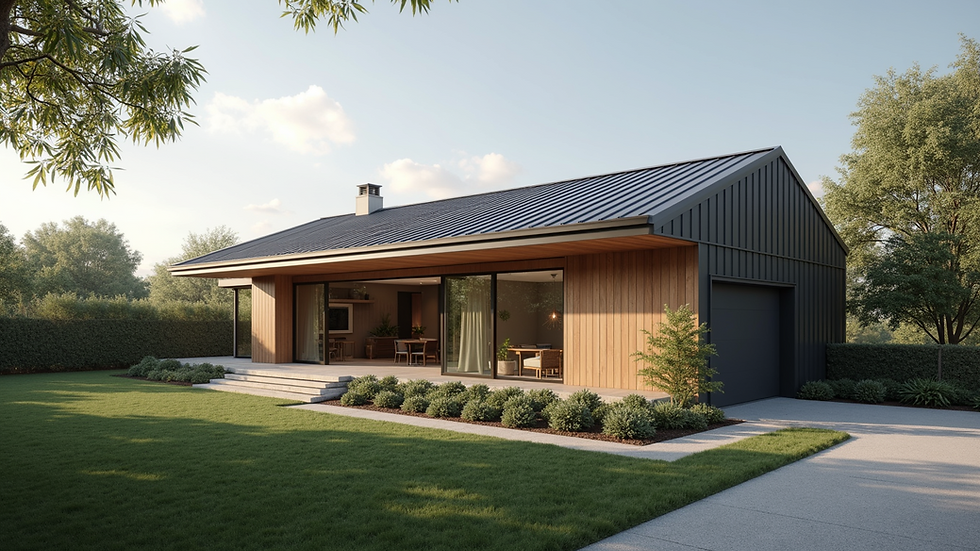Protect Your Chimney with Top-Quality Caps
- jgroofing023
- Jul 2
- 5 min read
Chimneys are often overlooked when it comes to home maintenance. Many homeowners focus on the roof, gutters, and siding, but the chimney deserves just as much attention. A well-maintained chimney is essential for the safety and efficiency of your home. One of the best ways to protect your chimney is by installing a high-quality cap. In this post, we will explore the importance of chimney caps, the different types available, and how to choose the right one for your home.
Why You Need a Chimney Cap
A chimney cap is a protective cover that sits on top of your chimney. It serves several important functions that can help prolong the life of your chimney and improve its performance. Here are some key reasons why you should consider installing a chimney cap:
Prevents Water Damage: Rain and snow can cause significant damage to your chimney over time. Water can seep into the masonry, leading to cracks and deterioration. A chimney cap helps keep water out, protecting your chimney from moisture-related issues.
Keeps Animals Out: Birds, squirrels, and other animals often seek shelter in chimneys. This can lead to blockages and even dangerous situations if animals get trapped. A chimney cap acts as a barrier, preventing animals from entering your chimney.
Reduces Downdrafts: A chimney cap can help reduce downdrafts, which occur when cold air pushes smoke back into your home. This can create unpleasant odors and even health hazards. A properly installed cap can help maintain a steady draft, ensuring that smoke exits your home efficiently.
Prevents Debris Buildup: Leaves, twigs, and other debris can easily fall into an open chimney. This buildup can lead to blockages and increase the risk of chimney fires. A chimney cap keeps debris out, helping to maintain a clear flue.
Enhances Aesthetic Appeal: In addition to its functional benefits, a chimney cap can also enhance the look of your home. With various styles and materials available, you can choose a cap that complements your home's architecture.
Types of Chimney Caps
When it comes to chimney caps, there are several types to choose from. Each type has its own unique features and benefits. Here are some of the most common options:
Metal Chimney Caps: These caps are typically made from stainless steel, copper, or aluminum. Metal caps are durable and resistant to rust and corrosion. They are available in various styles, including flat, sloped, and decorative designs.
Masonry Chimney Caps: If you have a brick or stone chimney, a masonry cap may be the best option. These caps are made from the same materials as your chimney, providing a seamless look. They are often custom-made to fit your chimney perfectly.
Spark Guard Caps: These caps are designed to prevent sparks from escaping your chimney and igniting nearby materials. They are especially important for homes located in areas prone to wildfires. Spark guard caps typically feature a mesh screen that allows smoke to escape while keeping sparks contained.
Wind Directional Caps: These caps are designed to improve draft by directing wind flow. They can help reduce downdrafts and improve the efficiency of your fireplace or stove. Wind directional caps are often adjustable, allowing you to change their position based on wind conditions.
Custom Caps: If you have a unique chimney design, you may want to consider a custom cap. Many manufacturers offer custom solutions that can be tailored to your specific needs. This option allows you to choose the materials, style, and features that best suit your home.
Choosing the Right Chimney Cap
Selecting the right chimney cap for your home can be a daunting task. Here are some factors to consider when making your decision:
Material: Consider the climate in your area when choosing a material. Stainless steel is a great option for humid climates, while copper offers a classic look that ages beautifully.
Size: Measure your chimney flue to ensure you choose a cap that fits properly. A cap that is too small will not provide adequate protection, while one that is too large may not sit securely.
Style: Think about the overall aesthetic of your home. Choose a cap that complements your roofline and architectural style.
Features: Consider any additional features you may want, such as spark guards or wind directional capabilities. These features can enhance the performance of your chimney cap.
Budget: Chimney caps come in a range of prices. Determine your budget before shopping to help narrow down your options.
Installation Tips
Installing a chimney cap can be a DIY project, but it is essential to follow proper procedures to ensure safety and effectiveness. Here are some tips for a successful installation:
Safety First: Always prioritize safety when working on your roof. Use a sturdy ladder and wear appropriate safety gear. If you are uncomfortable working at heights, consider hiring a professional.
Gather Tools and Materials: Before starting, gather all necessary tools and materials. You will typically need a chimney cap, screws or anchors, a drill, and a screwdriver.
Clean the Chimney: Before installing the cap, clean the chimney flue to remove any debris or soot. This will ensure a secure fit and improve performance.
Follow Manufacturer Instructions: Each chimney cap may have specific installation instructions. Be sure to follow these guidelines closely for the best results.
Check for Proper Fit: Once the cap is installed, check for a secure fit. Ensure that it sits evenly on the chimney and is not loose.
Maintenance and Care
To keep your chimney cap in top condition, regular maintenance is essential. Here are some tips for caring for your chimney cap:
Inspect Regularly: Check your chimney cap at least once a year for signs of damage or wear. Look for rust, cracks, or loose fittings.
Clean as Needed: Remove any debris that may accumulate on the cap. This will help maintain proper airflow and prevent blockages.
Repair or Replace: If you notice any damage, address it promptly. Depending on the severity, you may need to repair or replace the cap.
Schedule Professional Inspections: Consider having a professional inspect your chimney and cap every few years. They can identify any potential issues and ensure everything is functioning correctly.
The Bottom Line
Investing in a high-quality chimney cap is a smart decision for any homeowner. Not only does it protect your chimney from water damage and debris, but it also enhances the efficiency of your fireplace or stove. With various types and styles available, you can find the perfect cap to suit your home.
By following the tips outlined in this post, you can choose, install, and maintain a chimney cap that will serve you well for years to come. Remember, a well-protected chimney is a happy chimney, and your home will thank you for it.



Comments